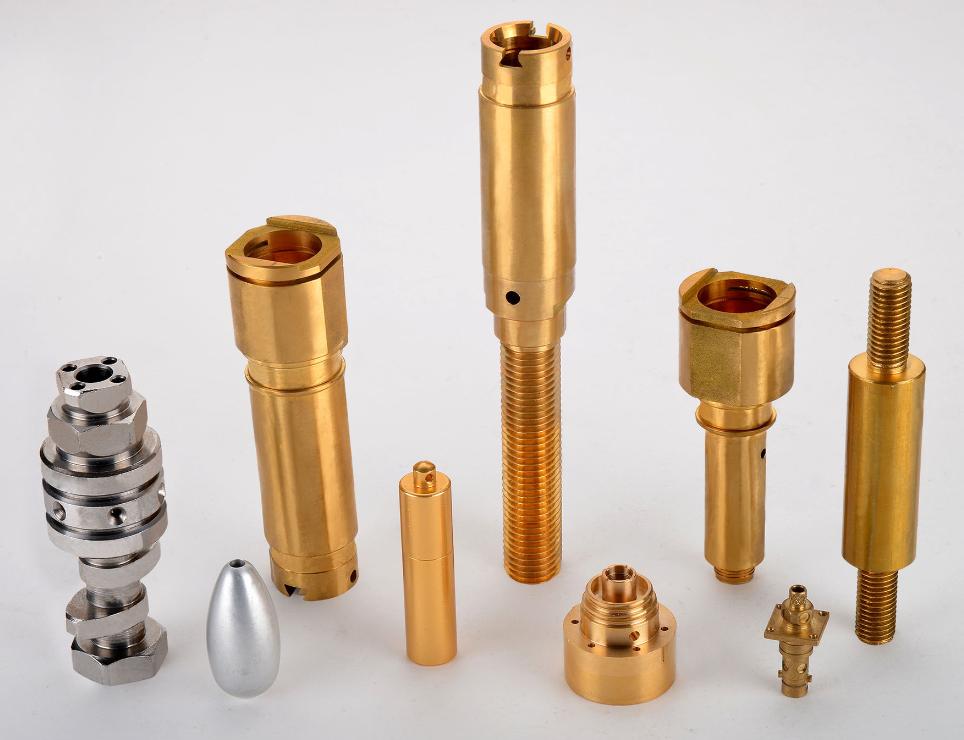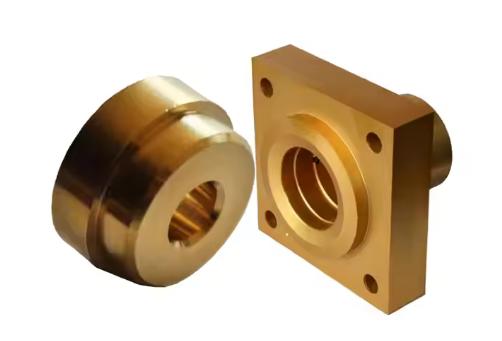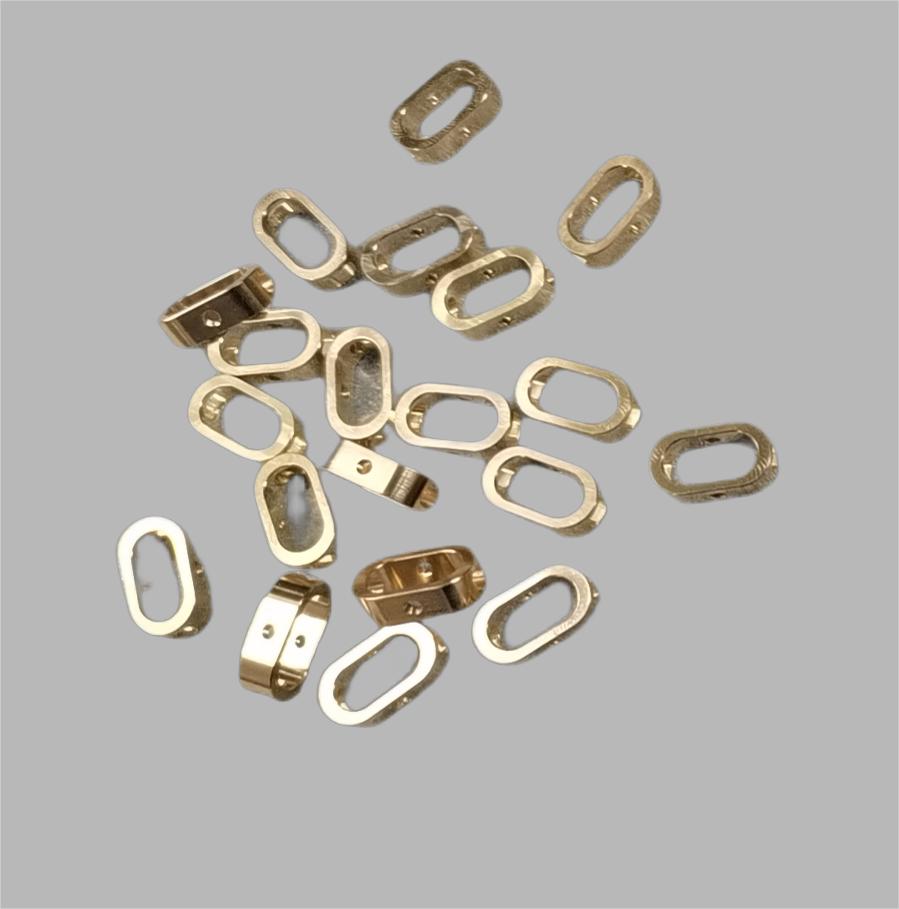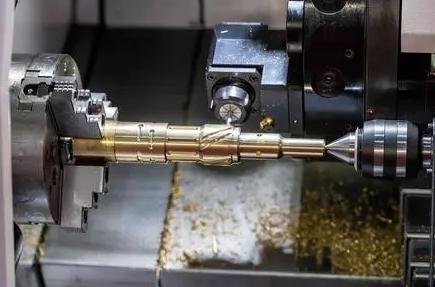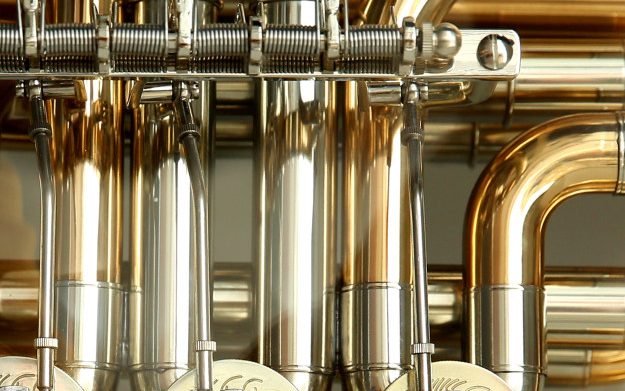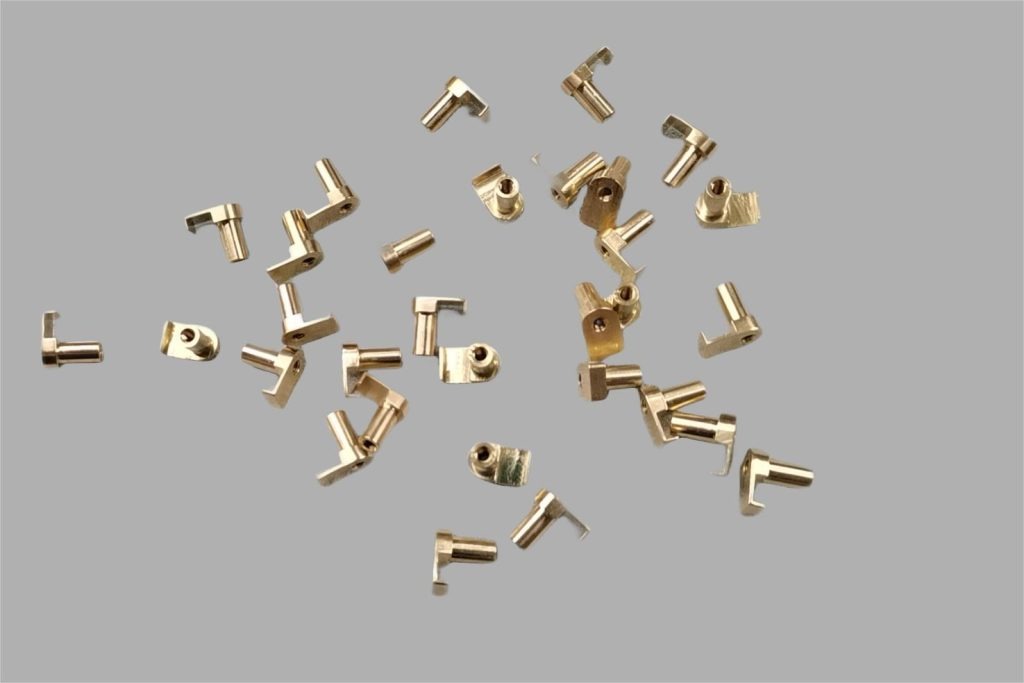The realm of precision manufacturing relies heavily on Computer Numerical Control (CNC) machining, and when it comes to intricate, small components, brass stands out as a versatile and frequently chosen material. Its excellent machinability, corrosion resistance, and electrical conductivity make it ideal for a wide array of applications, from intricate gears in miniature devices to delicate electrical connectors. However, successfully machining small brass parts demands a nuanced understanding of several key aspects. This article delves into six crucial considerations that engineers, designers, and manufacturers must grasp to achieve optimal results in terms of quality, cost-effectiveness, and performance. By paying close attention to material selection, processing parameters, surface treatment, cost control, application adaptability, and supplier selection, one can unlock the full potential of CNC machining for small brass components.
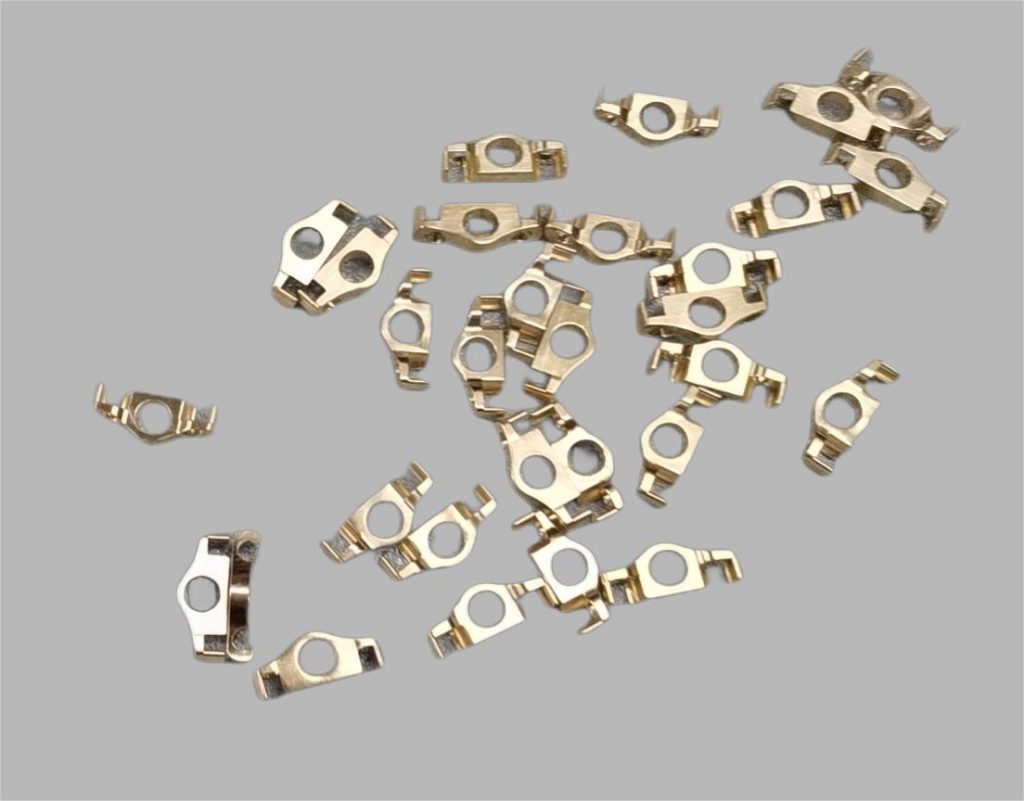
1. Material Selection and Performance
Choosing the right type of brass for your application is the first and most crucial step. Brass comes in various alloys, each with unique properties such as tensile strength, machinability, and corrosion resistance. Common brass alloys include C360 (free-machining brass) and C464 (naval brass). Let’s delve into the characteristics of some common brass grades:
- C360 (Free-Cutting Brass): Characterized by the addition of lead, C360 exhibits exceptional machinability, allowing for high cutting speeds and intricate detailing. It offers good strength and corrosion resistance but is generally not recommended for applications involving high temperatures or significant forming operations.
- C464 (Naval Brass): This alloy contains a small percentage of tin, which significantly enhances its resistance to corrosion, particularly in marine environments. It possesses good strength and moderate machinability.
- C280 (Muntz Metal): With a higher zinc content, C280 offers increased strength and hardness compared to lower zinc brasses. Its machinability is fair, and it finds use in applications requiring structural integrity.
- C260 (Cartridge Brass): Possessing a balanced copper-zinc ratio, C260 exhibits excellent ductility and formability, making it suitable for deep drawing and stamping. Its machinability is good, and it offers good strength and corrosion resistance. It also has relatively high electrical conductivity.
- C230 (Red Brass): With a higher copper content, C230 displays excellent corrosion resistance and good ductility. Its machinability is fair, and it is often chosen for plumbing and architectural applications where resistance to dezincification is important.
- C220 (Commercial Bronze): Similar to red brass but with slightly less copper, C220 offers good corrosion resistance and ductility. It has a reddish-gold hue and is often used for decorative purposes and hardware.
The table below provides a comparative overview of these common brass grades:
| Grade | Copper (%) | Zinc (%) | Lead (%) | Advantages | Disadvantages | Applicable Scenarios |
| C360 | 61.0-63.0 | 34.0-37.0 | 2.5-3.7 | Excellent machinability, high production speeds, good strength, corrosion resistance | Lower corrosion resistance | Screws, nuts, bolts, gears, intricate components requiring high-speed machining |
| C464 | 59.0-62.0 | 37-39 | ≤0.15 | Excellent corrosion resistance (especially in saltwater), good strength | Difficult to machine | Marine hardware, condensers, heat exchanger tubes |
| C280 | 59.0-63.0 | About 40 | ≤0.30 | Higher strength and hardness compared to lower zinc brasses | Less machinable | Structural components, fasteners |
| C260 | 68.5-71.5 | About 30 | ≤0.07 | Excellent ductility and formability, good machinability, good strength and corrosion resistance, high electrical conductivity | Lower strength | Electrical connectors, stampings, deep-drawn parts, radiator cores |
| C230 | 84.0-86.0 | About 15 | ≤0.05 | Excellent corrosion resistance, good ductility, resistance to dezincification | Lower strength and machinability | Plumbing fixtures, heat exchangers, architectural trim |
| C220 | 89.0-91.0 | About 10 | ≤0.05 | Good corrosion resistance and ductility, reddish-gold color | Limited strength | Decorative hardware, jewelry, fasteners |
Ultimately, selecting the right brass alloy is a foundational step. Understanding the performance requirements of the final component – its intended function, operating environment, and mechanical stress – will guide the choice towards a material that balances machinability with the necessary physical and chemical properties. Careful consideration at this stage prevents downstream issues and ensures the longevity and reliability of the small brass part.
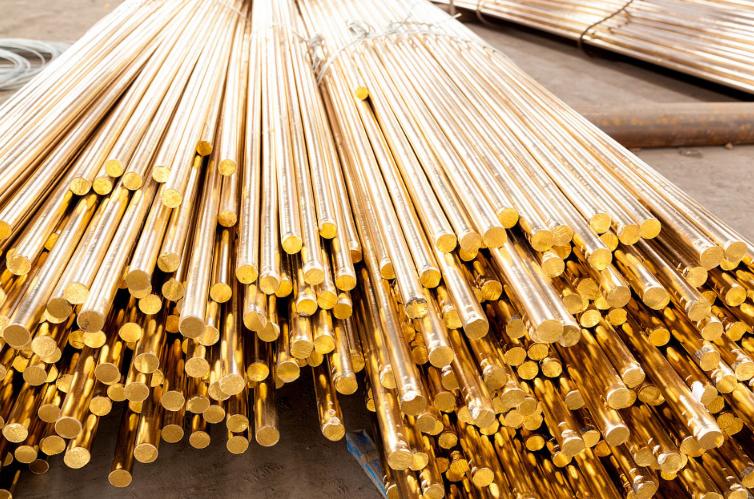
2. Processing Parameter Optimization
Achieving high precision and surface finish in small brass parts through CNC machining hinges on meticulously optimizing processing parameters. For small, intricate features, even minor deviations can significantly impact the final quality. This optimization involves a careful consideration of tool selection, cutting parameters, and cooling and lubrication strategies, all tailored to the specific characteristics of brass and the delicate nature of the parts being machined.
Tool Selection:
The selection of appropriate cutting tools is paramount for successful small brass part machining. Given the relatively soft nature of brass, sharp, high-quality tools are essential to minimize cutting forces and prevent burr formation, which can be particularly problematic on small, delicate features.
- Tool Material: High-speed steel (HSS) and carbide tools are commonly used for machining brass. HSS tools are often a more cost-effective option for smaller production runs and intricate geometries where tool sharpness is critical. Carbide tools, while more expensive, offer higher hardness and wear resistance, making them suitable for higher cutting speeds and larger production volumes. For very fine features, solid carbide end mills with specialized geometries are often preferred.
- Tool Geometry: The geometry of the cutting tool significantly influences chip formation and surface finish. For brass, tools with a positive rake angle are generally recommended as they promote shearing of the material, reducing cutting forces and heat generation. The number of flutes also plays a role; fewer flutes provide more chip evacuation space, which is important when machining softer materials like brass that can produce larger chips. For finishing operations on small parts, multi-flute end mills can provide a smoother surface finish.
- Tool Size: When machining small features, the diameter of the cutting tool is a critical consideration. Smaller diameter tools are necessary to access intricate geometries and create fine details. However, smaller tools are also more susceptible to deflection and breakage, requiring careful selection and optimized cutting parameters. Micro-end mills, with diameters as small as a few micrometers, are often employed for extremely fine features in miniature brass components.
- Tool Coating: While brass is relatively easy to machine, certain coatings can enhance tool life and surface finish. TiN (Titanium Nitride) coatings can improve wear resistance and reduce friction, while TiAlN (Titanium Aluminum Nitride) coatings offer better performance at higher temperatures, although heat generation is typically less of a concern with brass. Uncoated, sharp tools are often preferred for very fine finishing cuts to maintain edge sharpness.
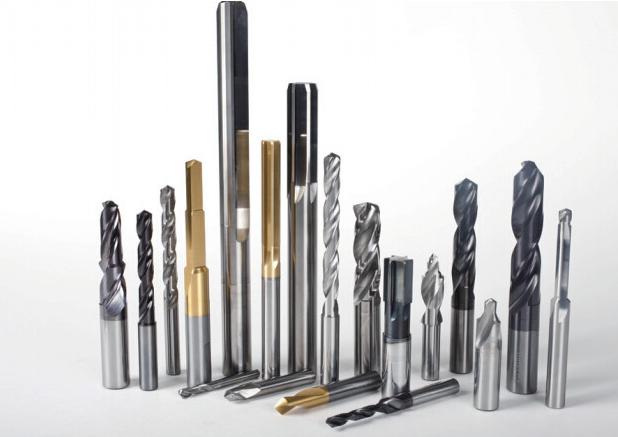
Cutting Parameters:
Optimizing cutting parameters involves finding the right balance between material removal rate, tool life, and surface finish. For small brass parts, precision and surface quality often take precedence over aggressive material removal.
- Cutting Speed: Brass generally allows for higher cutting speeds compared to harder materials. However, excessive speed can lead to built-up edge (BUE) on the tool, especially with softer brass grades, resulting in poor surface finish and dimensional inaccuracies. The optimal cutting speed depends on the brass alloy, tool material and coating, and the specific operation (roughing vs. finishing). For example, C360 free-cutting brass can typically be machined at higher speeds than C260 cartridge brass. Speeds can range from 50-300 m/min or higher depending on the specific conditions.
- Feed Rate (f): The feed rate, or the distance the cutting tool advances per revolution (for turning/milling) or per stroke (for shaping/planing), directly affects the surface finish and cutting forces. For small brass parts, lower feed rates are often preferred for finishing passes to achieve a smooth surface. However, excessively low feed rates can lead to rubbing and increased heat generation. Feed rates are typically expressed in mm/rev or mm/tooth and can range from 0.01 to 0.1 mm/rev or mm/tooth for finishing small brass parts.
- Depth of Cut: The depth of cut (axial in milling, radial in turning) influences the material removal rate and cutting forces. For roughing operations on small brass parts, a moderate depth of cut can be used. However, for finishing passes and intricate features, shallower depths of cut are necessary to maintain accuracy and surface quality. Maintaining consistent, small depths of cut minimizes the risk of tool deflection, which is critical when working with small diameter tools.
- Spindle Speed (N): The spindle speed (in RPM) is directly related to the cutting speed. Selecting the appropriate spindle speed ensures that the desired cutting speed is achieved for the given tool diameter.
Cooling and Lubrication:
Effective cooling and lubrication are crucial in small brass part machining to dissipate heat, reduce friction, and facilitate chip evacuation.
- Coolant Type: Water-soluble coolants are commonly used for machining brass as they provide good cooling and help flush away chips. Cutting oils can also be effective, especially for operations requiring good lubrication and a fine surface finish. The choice depends on the specific operation, brass alloy, and desired surface quality.
- Coolant Application: For small, intricate parts, precise coolant delivery is essential. Flood coolant is commonly used to ensure adequate cooling and lubrication of the cutting zone. However, for very fine features or when machining in tight spaces, mist coolant or through-tool coolant delivery can be more effective in reaching the cutting edge and preventing chip buildup. Ensuring proper coolant flow and pressure is vital to prevent overheating and maintain consistent cutting conditions.
- Chip Evacuation: Efficient chip evacuation is particularly important when machining small brass parts to prevent chips from getting trapped in intricate features or scratching the machined surface. Proper coolant flow and tool geometry play a significant role in chip removal. In some cases, air blast can be used in conjunction with coolant to aid in chip evacuation, especially in deep or narrow features.
Optimizing these parameters often involves a combination of theoretical calculations, practical experimentation, and fine-tuning based on the specific machine, tooling, brass alloy, and the geometry of the small part being machined. Utilizing CAM software to simulate and refine toolpaths and cutting conditions can significantly aid in achieving efficient and precise machining of small brass parts while minimizing tool wear and maximizing surface quality.
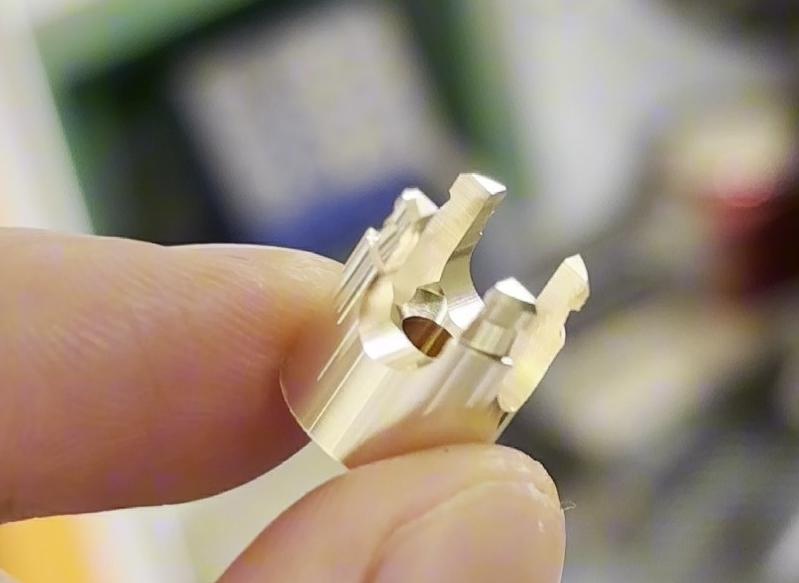
3. Surface Treatment and Quality Control
While CNC machining strives for precision, secondary processes like deburring and surface treatments are often necessary to achieve the desired functionality, aesthetics, and longevity of small brass parts. Furthermore, rigorous quality control measures throughout the manufacturing process are crucial to ensure these tiny components meet stringent specifications.
Deburring Technology
Deburring is essential for removing sharp edges and small protrusions left behind during machining. These burrs can affect the assembly and performance of brass components. Common deburring methods include:
- Manual Deburring: Using files or abrasive tools to manually smooth edges, suitable for small batches.
- Mechanical Deburring: Employing tumblers or vibratory machines with abrasive media to process multiple parts simultaneously.
- Electrochemical Deburring (ECD): Utilizing controlled electrochemical reactions to remove burrs in hard-to-reach areas without damaging the part.
- Thermal Deburring: Applying high-energy gas explosions to eliminate burrs, ideal for complex geometries.
Each method is chosen based on the part’s complexity, production volume, and required finish.
Anti-Oxidation Treatment
Brass is prone to tarnishing due to oxidation, which affects its appearance and, in some cases, its functionality. Anti-oxidation treatments are crucial for enhancing durability and maintaining aesthetic appeal:
- Protective Coatings: Clear lacquers or polymer coatings can be applied to shield the brass surface from environmental exposure.
- Chemical Passivation: Treating the surface with chemical solutions to form a protective oxide layer that resists further oxidation.
- Plating: Applying a thin layer of nickel, chrome, or other metals to enhance corrosion resistance and maintain a polished appearance.
- Cleaning and Sealing: Regular cleaning followed by sealing with wax or oil to slow oxidation and maintain a natural finish.
Incorporating advanced deburring techniques and anti-oxidation treatments ensures that small brass parts achieve the desired functionality and aesthetic quality. These steps are integral to producing components that meet stringent industry standards.
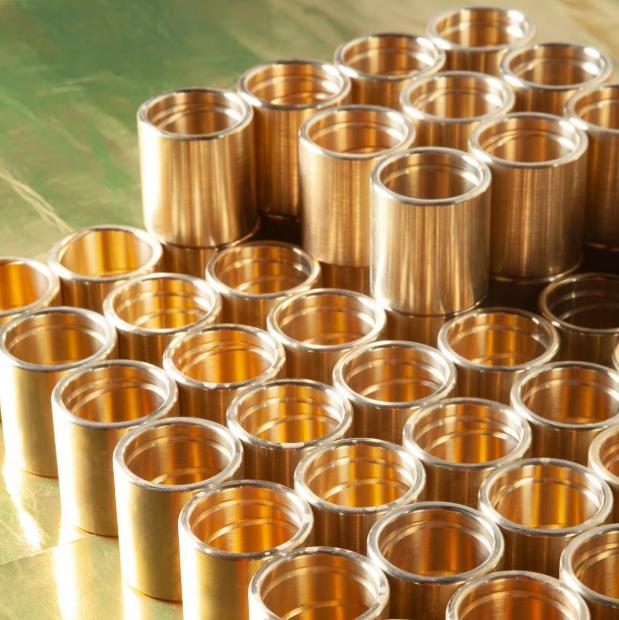
4. Cost Control Strategy
Manufacturing small brass parts cost-effectively demands a strategic approach that optimizes resource utilization and minimizes waste throughout the production process. For these often intricate and high-precision components, cost efficiency is achieved through careful planning and execution across material usage, production scale, and tool management.
Material Utilization
Efficient use of materials can significantly reduce waste and lower production costs:
- Optimized Part Design: Design parts to minimize excess material removal during machining.
- Advanced Nesting Techniques: Use software to arrange part layouts in a way that maximizes material yield, especially for sheet or bar stock.
- Recycling: Implement recycling programs for brass chips and scrap to reclaim material value.
Batch Production
Producing parts in batches reduces setup time and operational costs:
- Grouped Operations: Combine similar parts or features into single production runs to streamline machining processes.
- Standardized Tooling: Use standardized tools and fixtures for repeatable setups, minimizing downtime.
- Volume Discounts: Leverage economies of scale by ordering raw materials and consumables in bulk for large production runs.
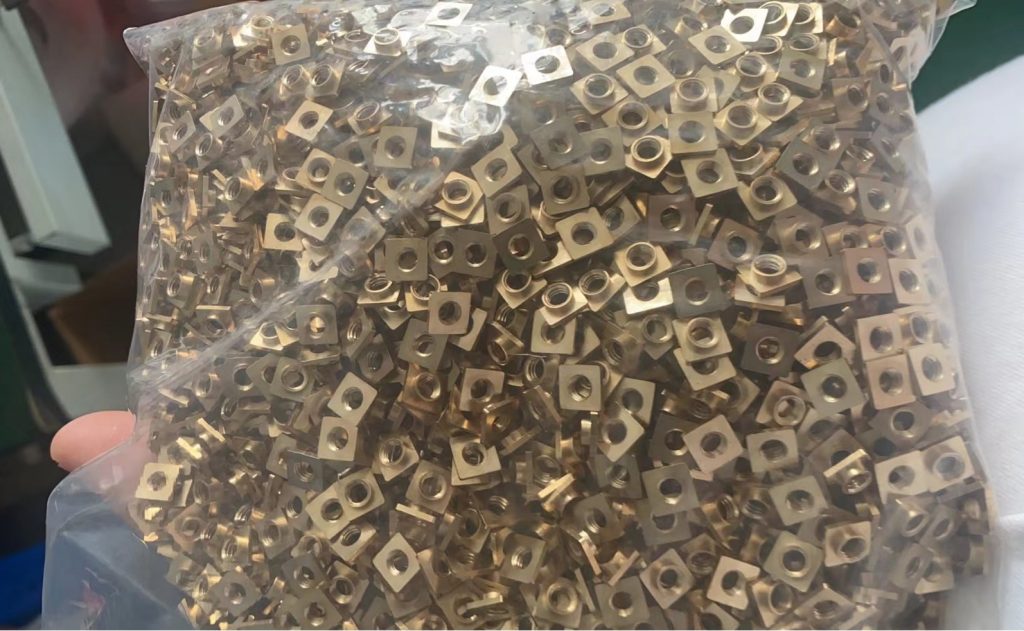
Tool Maintenance
Well-maintained tools reduce operational costs and improve machining efficiency:
- Regular Inspections: Inspect tools for wear and replace them promptly to prevent quality issues or machine damage.
- Proper Storage: Store tools in controlled environments to avoid corrosion and mechanical damage.
- Tool Reconditioning: Regrind or recoat tools to extend their lifespan and maintain cutting performance.
By focusing on material utilization, adopting batch production practices, and ensuring effective tool maintenance, manufacturers can achieve substantial cost savings without compromising on quality. These strategies form the foundation of a cost-effective and efficient CNC machining process for small brass parts.
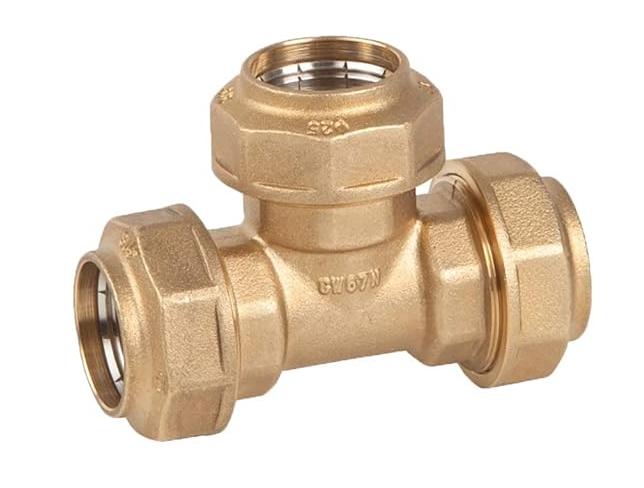
5. Application Scenario Adaptability
Brass’s inherent properties, coupled with the precision of CNC machining, make it an ideal material for intricate components in sectors ranging from high-tech electronics to life-saving medical devices. The table below highlights specific applications and the advantages of using small brass components in the electronics industry, precision instruments, and medical equipment.
| Industry | Specific Applications | Advantages of Using Small Brass Parts |
| Electronics Industry | Connectors and Terminals (pins, sockets), Shielding Components (enclosures, clips), Heat Sinks and Thermal Management, Fasteners and Mounting Hardware (screws, nuts, standoffs) | Excellent electrical conductivity for signal/power transmission, good solderability for reliable connections, effective EMI/RFI shielding capabilities, good strength for fasteners, non-magnetic properties in certain alloys, machinability for intricate geometries. |
| Precision Instruments | Gears and Mechanisms (levers, linkages), Optical Mounts and Fixtures (lens holders), Fluid Control Components (valves, nozzles), Sensor Housings and Components | High machinability for creating intricate and precise components, good stability for accurate motion and alignment, resistance to wear and corrosion for long-term reliability, non-magnetic properties in certain alloys for sensitive applications, dimensional accuracy achieved through CNC. |
| Medical Equipment | Connectors and Fittings (fluid/gas transfer in non-implantable devices), Certain Non-Critical Surgical Instrument Components (handles, clamps), Diagnostic Equipment Components (housings, contacts), Dental Instrument Components | Good machinability for producing complex shapes, ease of sterilization for instrument components, corrosion resistance for fluid pathways, electrical conductivity for sensor contacts, dimensional precision for reliable assembly of medical devices. |
In each of these diverse application scenarios, the adaptability of CNC machining allows for the creation of highly customized small brass parts that meet the specific functional, performance, and regulatory requirements of the industry.

6. Choosing the Right CNC Machining Manufacturer
Selecting the ideal manufacturing partner for your small brass parts is a critical decision that directly impacts the quality, cost-effectiveness, and timely delivery of your components. While numerous CNC machining manufacturers exist, JTR Machinery distinguishes itself as a premier choice, particularly when it comes to the intricate and precise machining of small brass parts. Our commitment to excellence is evident in our advanced equipment capabilities, robust certification systems, and unwavering guarantee on delivery times.
Equipment Capability: Precision and Versatility for Small Brass
JTR Machinery boasts a state-of-the-art facility equipped with a comprehensive array of advanced CNC machining centers specifically suited for handling the complexities of small brass components. Our investment in cutting-edge technology ensures that we can meet the most demanding specifications and deliver parts with exceptional accuracy and surface finish.
Certification System: Ensuring Quality and Compliance
JTR Machinery operates under a stringent and comprehensive certification system, Our ISO 9001:2015 certification demonstrating our unwavering commitment to quality, environmental responsibility, and adherence to industry standards. Choosing a manufacturer with recognized certifications provides you with the assurance that your small brass parts are produced to the highest levels of quality and compliance.
Delivery Time Guarantee: Reliability You Can Count On
In today’s fast-paced environment, timely delivery is often as critical as the quality of the parts themselves. JTR Machinery understands the importance of meeting deadlines and offers a reliable delivery time guarantee for your small brass machining orders. We provide fast quotation within 24-hour, and small batch orders can be delivered in as fast as 3 days
Choosing JTR Machinery as your small brass machining manufacturer means partnering with a company that prioritizes precision, quality, and reliability. Our advanced equipment, robust certification systems, and commitment to on-time delivery provide you with the confidence and assurance you need for your critical small brass components. We are dedicated to exceeding your expectations and building a long-term partnership based on trust and exceptional manufacturing services.



